Timeless Treasures of Oceanic Arts
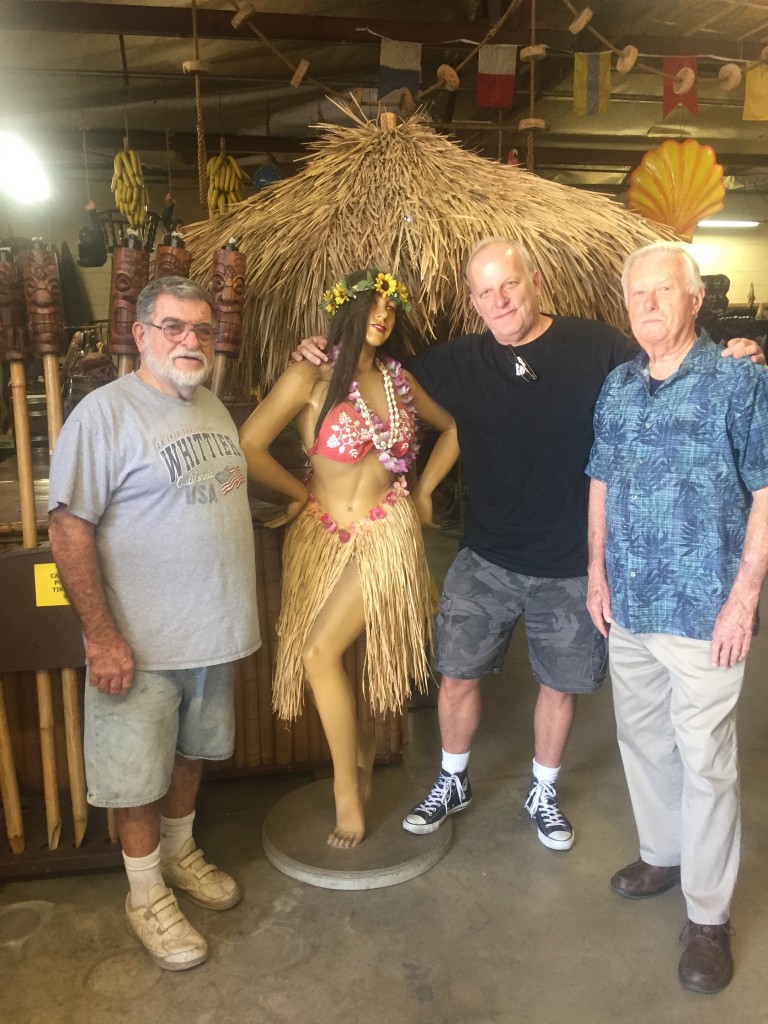
Oceanic Arts co-founders LeRoy Schmaltz (far left) and Bob Van Oosting (far right) with author and his friend, April 2016.
WHITTIER, Ca.–Every day is a getaway day at Oceanic Arts.
The holy grail of American tiki culture is tucked back in an industrial park in Whittier, Calif., the early home of President Richard Nixon.
Oceanic Arts is to the free blue seas what the Watergate complex was to fishy burglars.
Oceanic Arts is celebrating its 60th anniversary this year.
Founders LeRoy Schmaltz and Bob Van Oosting are still hanging ten.
Master carver Schmaltz turns 81 years old on May 14. His large hands are battered and knotty, the passionate notches within a mountain of a man.
Schmaltz’s father Earl was a 17-year-old choir director on the north side of Chicago, became an insurance salesman and later counted votes for Al Capone. His grandson Darby Goodwin was on the Chicago Tribune’s 2012 All-State Football team as a defensive lineman for Loyola Academy.
The family left Chicago for the west coast and Schmaltz was born in Los Angeles. Van Oosting, 80, is a former carver and the Los Angeles native now runs the business end of Oceanic Arts.
Oceanic Arts delivered the South Seas decor to Trader Vic’s, Don the Beachcomber, Disneyland, the Polynesian Hotel at Disney World, the Bali Hai in San Diego and even the set of the “Gilligan’s Island” television show. Oceanic Arts sends supplies to Chicago’s Three Dots and a Dash tiki bar on a monthly basis.
The 10,000 square feet Oceanic Arts is open to the public and features carvings, tiki heads, totems, shields, masks, thatching, fake tropical birds, seashell light shades, magazines, tiki CDs and books such as Douglas A. Nason’s “Night of The Tiki (The Art of Shag, Schmaltz and Selected Primitive Ocean Carvings)” [Last Gasp, $49.95]
Visitors are greeted by a female mannequin in a grass skirt and a small waterfall as they enter the mall of eternal high tides. Oceanic Arts has two other warehouses in Whittier. It is not known if President Nixon shopped at Oceanic Arts, but Johnny Depp is a regular customer.
The Rolling Stones once rented from Oceanic Arts for a party. “We lost some things,” Schmaltz said during an early April conversation at Oceanic Arts. “We don’t know where the party was but some of our skulls ended up at other people’s houses.
“We didn’t do a lot for ‘Gilligan’s Island’ originally. There was another firm that was closer to Hollywood. We got involved in later years with bamboo and thatching for their sets.
Most of “Gilligan’s Island” was shot at Radford Studios in Studio City, Ca. Earlier segments were shot on the beach in Malibu and the pilot was made on the island of Kauai.
Van Oosting said, “Early on when we were broke we were in a barn that was used for horses for a while. To save some money we decided to use some boards on the floor and carve them. They ended up in a restaurant on Sunset Boulevard. These boards had been urinated on for years by horses. We wire brushed the boards, hosed them down every day, but we started hearing about this ‘strange aroma’ in this restaurant.”
In his book, Nason wrote of Schmaltz, “Through his work as co-founder and an artist at the Oceanic Arts gallery and shop, he has probably had a larger influence on where tikis appeared and how they were perceived in America than any other individual.”
Van Oosting has been attributed to have said, “As long as the world is in turmoil, people always turn to peaceful, pleasurable worlds–and this is one of them.”
The good Dutchman laughed and said, “That must have been somebody else who said that. It is a fun place to be. We get set designers who meet here for some odd reason and they say to each other, ‘I haven’t seen you in 22 years.’ We get Wayne Johnson, ‘The Rock,’ Bridget Fonda. You supply a tropical movie, then they want to do their house that way.”
Schmaltz said, “In the earlier days we had a lot of people from Disney, architectural firms and interior decorators who made a beeline every Friday to our shop. We were more loose then. We had drinks and barbecues going.”
Schmaltz and Van Oosting met as students at Mt. San Jacinto College, about 25 miles from the current Oceanic Arts location.
Schmaltz was studying architecture and carving Palm Frond Masks (the thickest part of a palm tree leaf) as a side project. Schmaltz and Van Oosting partnered up and sold thousands of Palm Frond Masks (500 per order) to the Builder’s Emporium home improvement chain. Their wives stained and painted the masks.
“We got a little place in Bob’s garage,” Schmaltz said. “In the late 1940s Bob Carter was importing tikis and tapa cloth from the South Pacific (to sell to “Trader” Vic Bergeron and Donn Beach of Don the Beachcomber’s). He saw us and invited us to start working. We didn’t know much about tikis.” One of their earliest popular items was the Tahitian Support Posts for Trader Vic’s.
Van Oosting added, “We grew into a packing shed in Whittier, overlooking Los Angeles, We started doing carvings for Bob. We did some sales work for him. He was also involved with the Kahiki (in Columbus, Ohio) and we supplied them.” But both men kept their day jobs–Van Oosting worked in a pots and pans factory and the Hickory Hop drive-in restaurant in Pico Rivera, Ca. “Just a hippity hop to the Hickory Hop,” he cracked. Schmaltz was a designer and salesman in mid-century modern furniture at Crossroads Furniture in Whittier.
Initially, their work did not whet any appetite for tropical escapism.
Schmaltz said, “I went to look at mountains near here. So did Bob. That was paradise to us, you got the pine trees. Then the desert areas are kind of neat. We have the ocean here.”
Van Oosting added, “Once we got in the business, paradise was out there. So we went out there for three and a half months and 37,000 miles.
The carvers are modest about that 1960 journey they call “The Big Trip.”
Schmaltz and Van Oosting traveled from Hawaii through Tahiti, Fiji, New Caledonia, New Guinea, the Australian outback and then New Zealand. “Hawaii was no different than being in Southern California with the same stores and businesses,” Van Oosting said. “Once we got on the airplane and landed in Tahiti we were in paradise. In those Tahiti and Bora Bora didn’t have any hotels. We stayed in grass shacks. Bob Carter helped plant a dream into us. He had a slide show he showed us of his trips.”
“We hired a Chinese Tahitian fellow with a speedboat and went all around the islands. He wanted us to see the schools and figured the kids would get a kick out of it (the visitors in a speedboat). We have color slides of those kids and they looked at us and started crying.” The kids had never seen white people.
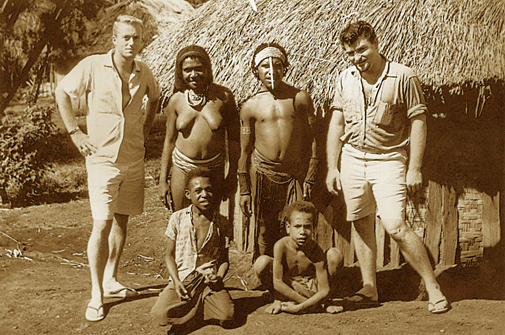
Bob (left) and LeRoy (right) in Chimbu Village near Papua, New Guinea–1960. (Courtesy of Oceanic Arts)
The journey instilled a world of confidence in the young carvers.
“We were supposedly just young punk kids who didn’t know anything,” Schmaltz said. “We kind of made ourselves an authority. We knew what we had seen. They were filming Marlon Brando’s ‘Mutiny on the Bounty’ when we were in Tahiti. So we looked at all the structures and buildings. We never saw Marlon Brando but we heard about him. He wanted a carved head but we didn’t let him have it.”
Van Oosting elaborated, “We learned a lot about design. We saw a book from 1868 in Fiji. We picked up good ideas in Dutch New Guinea. We have their masks and shields we replicated in hardwood. Somehow through gin and tonics and stuff we landed home in Los Angeles with $1.50 in our pockets.”
The carvers later worked for Pan American World Airways in Samoa and Tahiti. The largest tiki in Tahiti is 30 feet tall–it was carved out of Southern California pine by Schmaltz.
Van Oosting said, “We never got a ‘big break.’ We were broke all the time. We had enough to buy a good bottle of rum and that was about it. We did a lot of work for Disney World too.
“LeRoy carved a 35-foot totem pole for them, We did Trader Sam’s (the bar at Disneyland in Anaheim,) At one time LeRoy designed restaurants. We worked on restaurants in Tarrytown, N.Y., one near Kalamazoo, Michigan (the since-razed Tur Mai Kai), another in Denver.”
One of their prize commissions is an 18-feet tall and 16’ wide carved redwood tympanium for Marriott’s Kona Kai at their world headquarters in Bethesda, Md.
Schmaltz has done thousands of carvings in his lifetime.
He prefers redwood, sugar pine and mahagony, wood that is easy purveyed from Southern California lumber mills. Schmaltz deploys chisels, routers, sanders, grinders and chainsaws. “The more things I can get rid of to work faster, I prefer,” he said. “If I could use blasting powder, I would use that too.”
During my visit he was working on light fixtures for LuLu’s in Waikiki.
What does the master carver think about as he works?
“When I was carving with other people I would go into fantasy land and pretend I was one of the characters I was carving,” he answered. “I’m a New Guinea guy. Or a pirate–arrrrrgh. I try to think how they would be thinking.”
He sells his work to collectors for anywhere from $300 to $2,000. I picked up a hand carved table size Hawaiiian Bloxam Idol warrior for my home tiki bar for $300. The detail, especially in the face, is exquisite. It is made with care and dignity.
Schmaltz still works in his shop on a daily basis.
“I still do carvings,” he said in reflective shades. “Fine art. I keep pretty busy, but I don’t do as many big tikis as I used to. I have to bend down and lift them.” That’s okay.
LeRoy and Bob have uplifted the spirits of people all over the world.

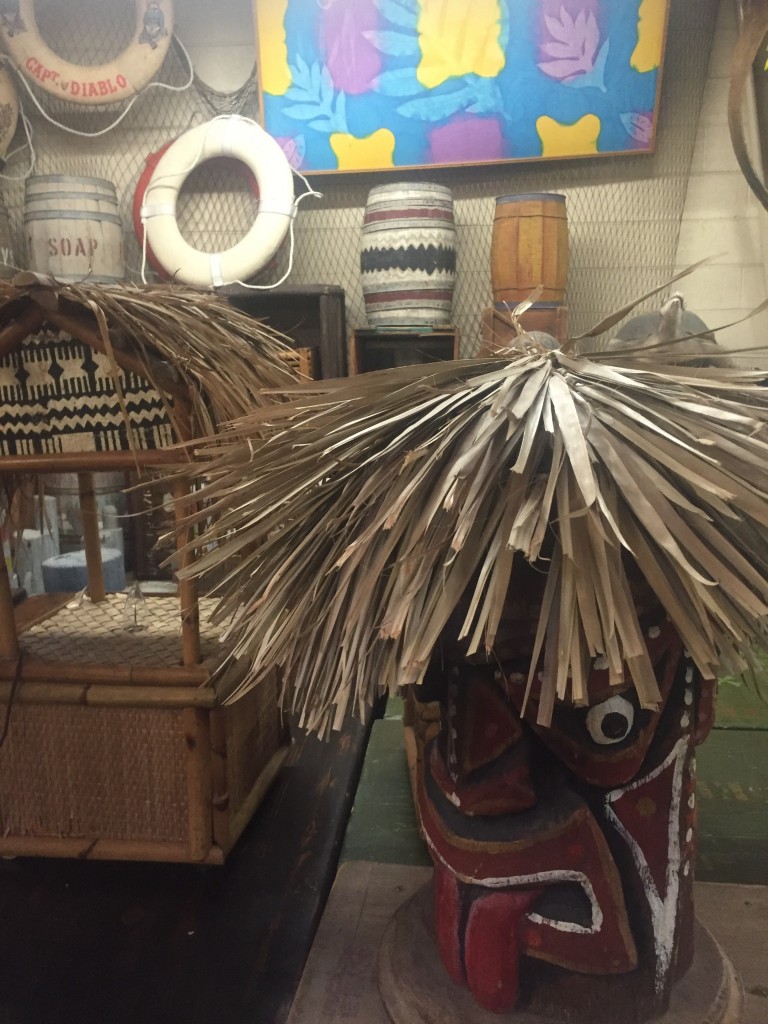
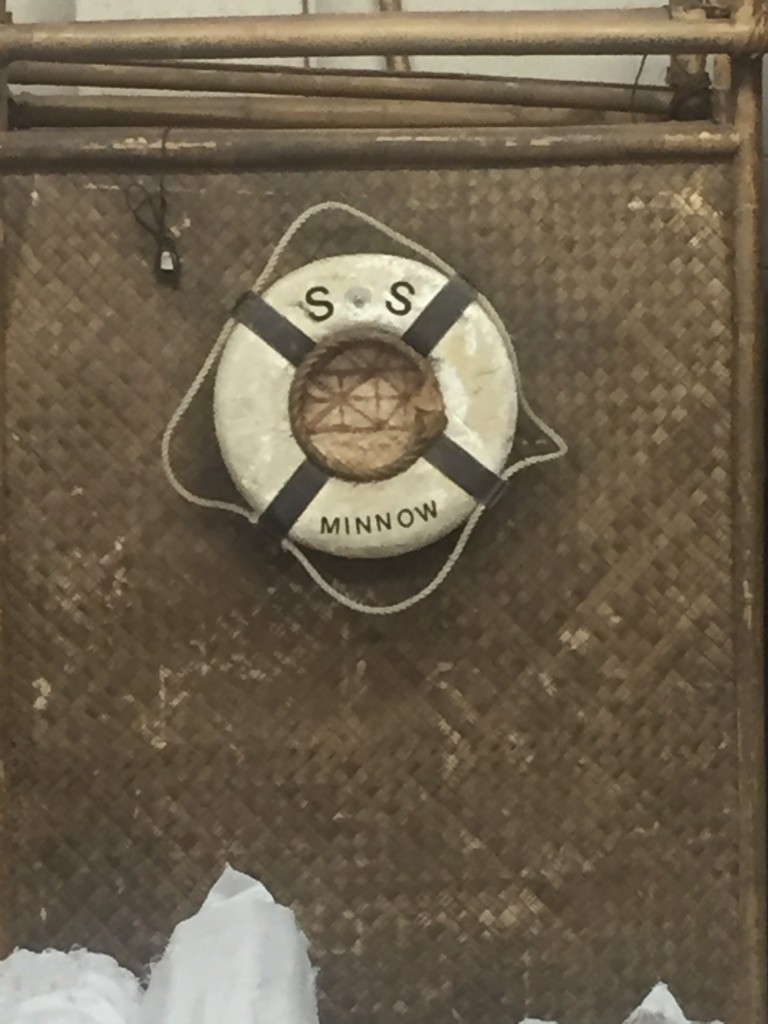
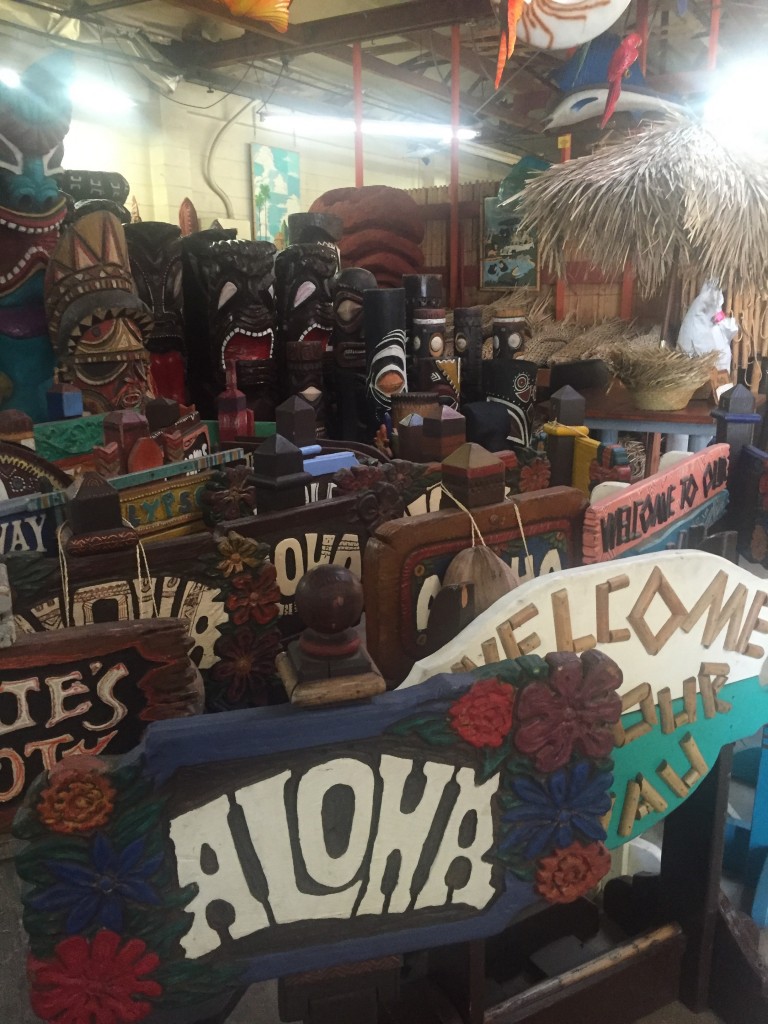
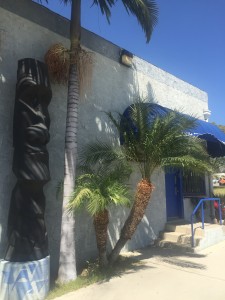
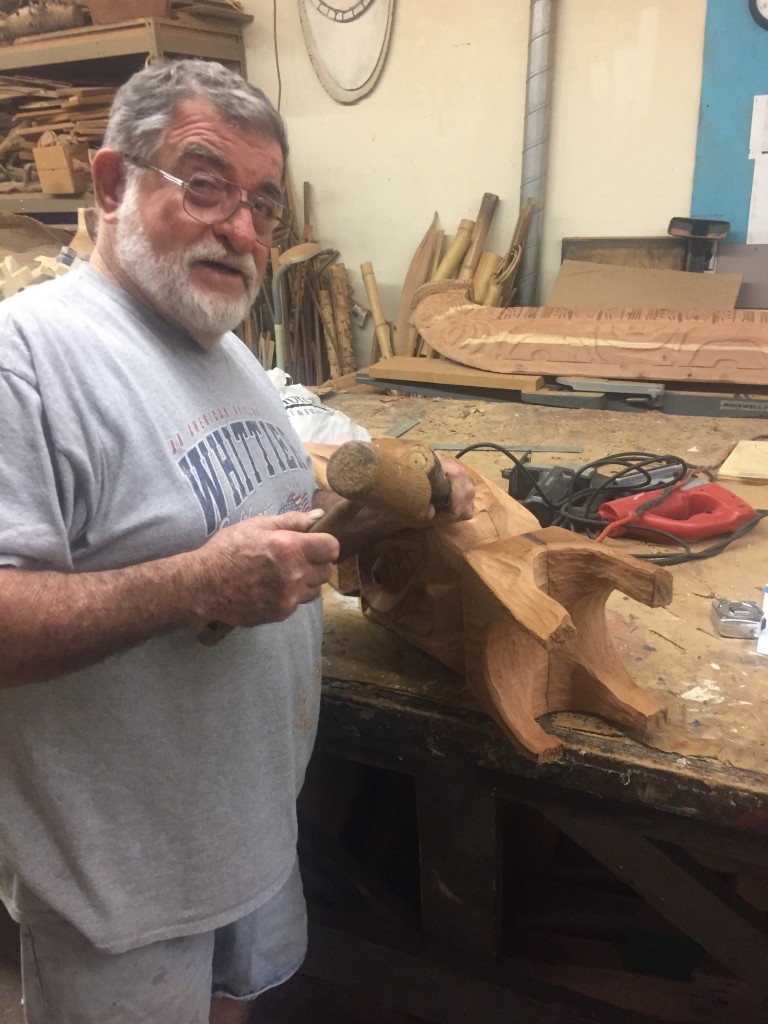
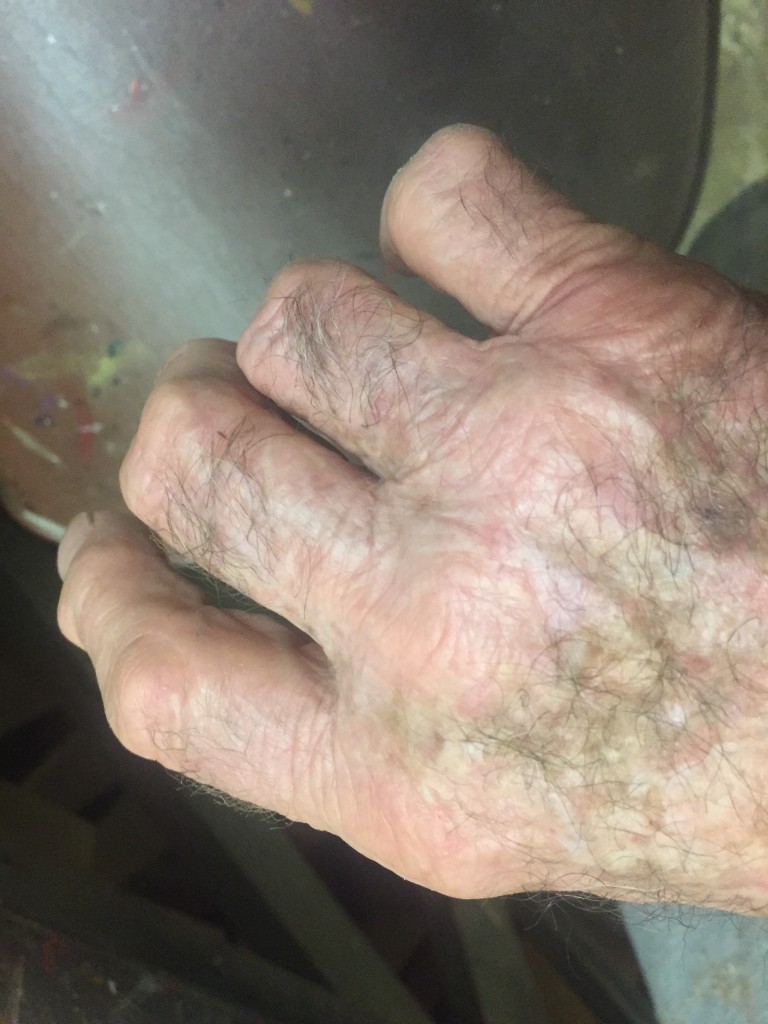

Leave a Response